Kleiner’s Korner: The Dangerous Intersection of Wheeler Road and the Motor Parkway
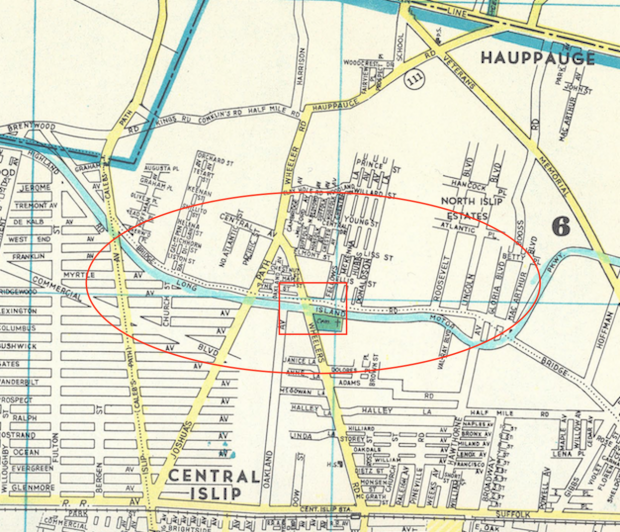
Following numerous accidents, the Town of Islip requested the Motor Parkway to be a good corporate citizen and correct a dangerous situation where the Parkway crossed Wheeler Road Read Willie K's. and Arthur Pardington's response. As we know a bridge was never built.
Art Kleiner
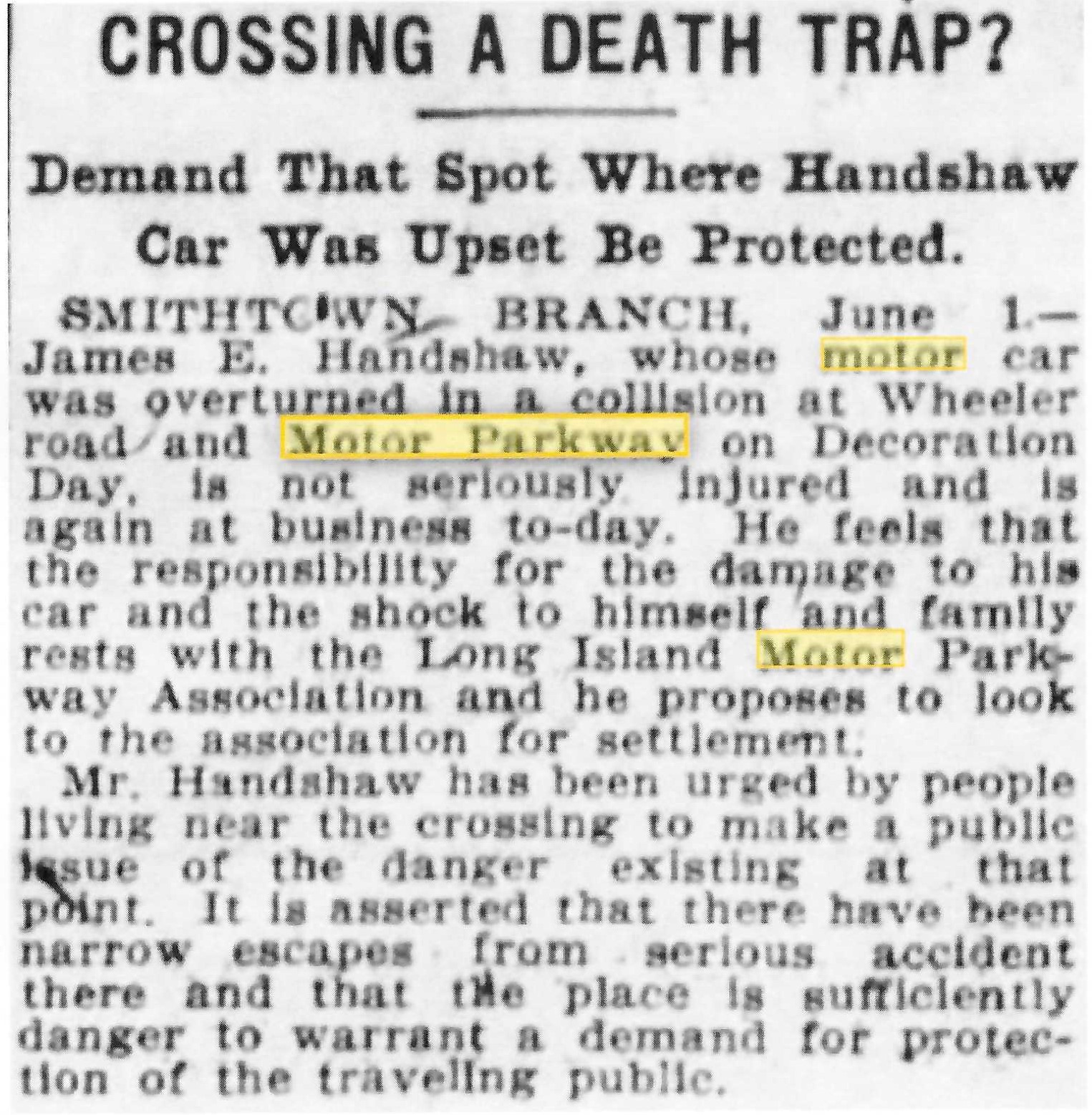
Numerous accidents caused the public to be concerned! (Brooklyn Times Union Jun. 1, 1911)
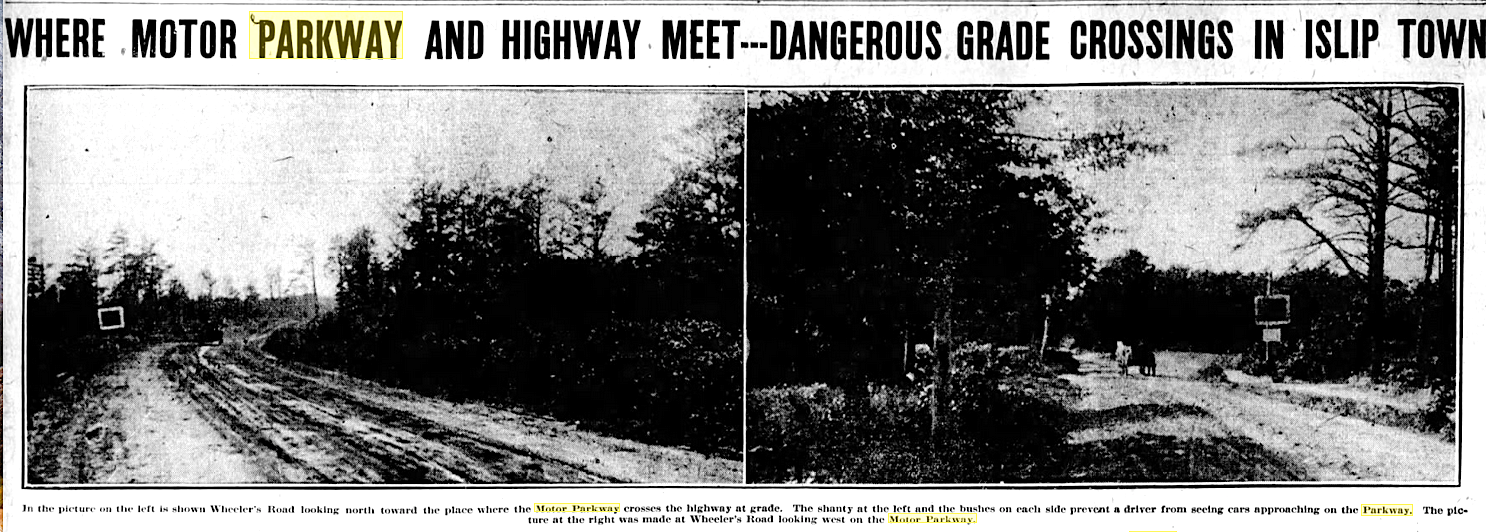
Driving from all directions the intersection caused a hazard. (Brooklyn Times Union Jun. 10, 1911)

The location causing concern.
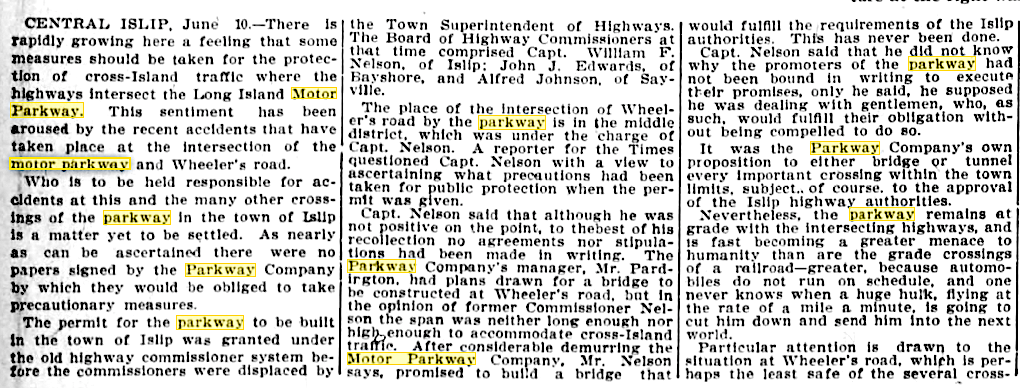
The Town of Islip blamed the Motor Parkway people but could not find any written agreement for the building of a bridge.
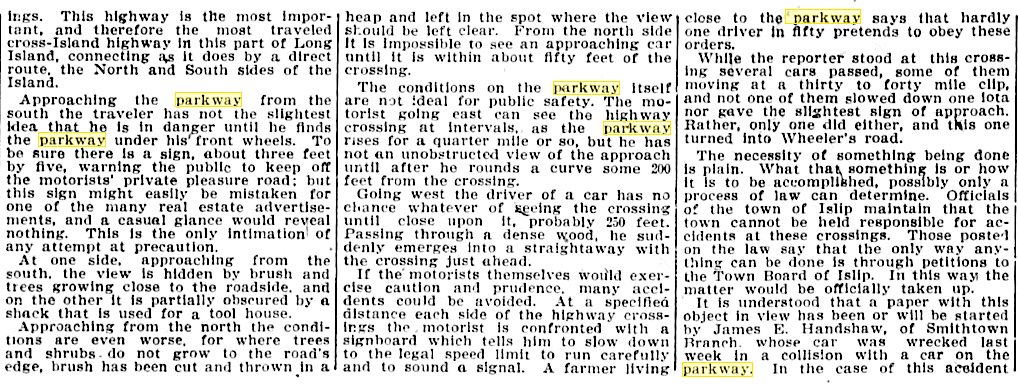
Motorists also didn't obey the rules.
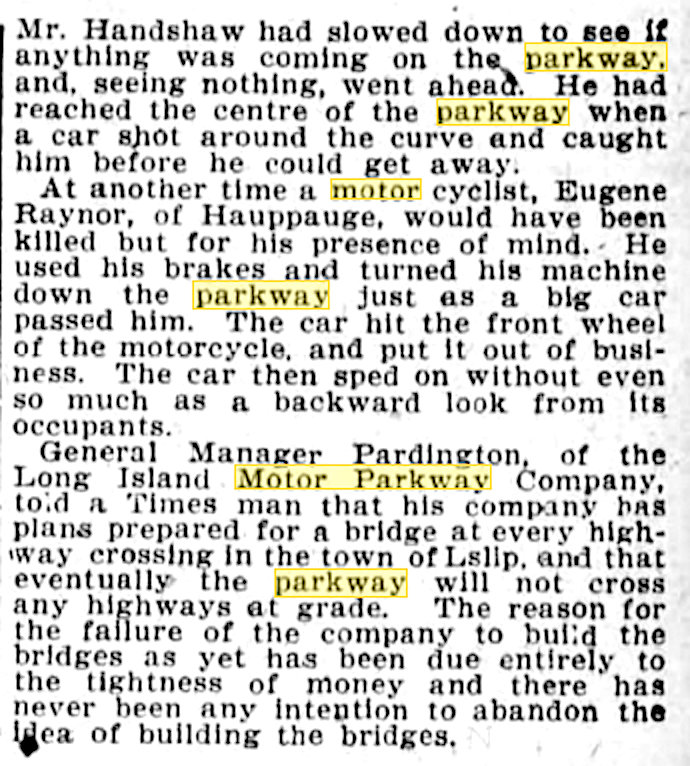
Pardington addresses the concerns by saying the delayed building of a bridge was "entirely due to a tightness of money" but that all crossings would eventually not be at grade.
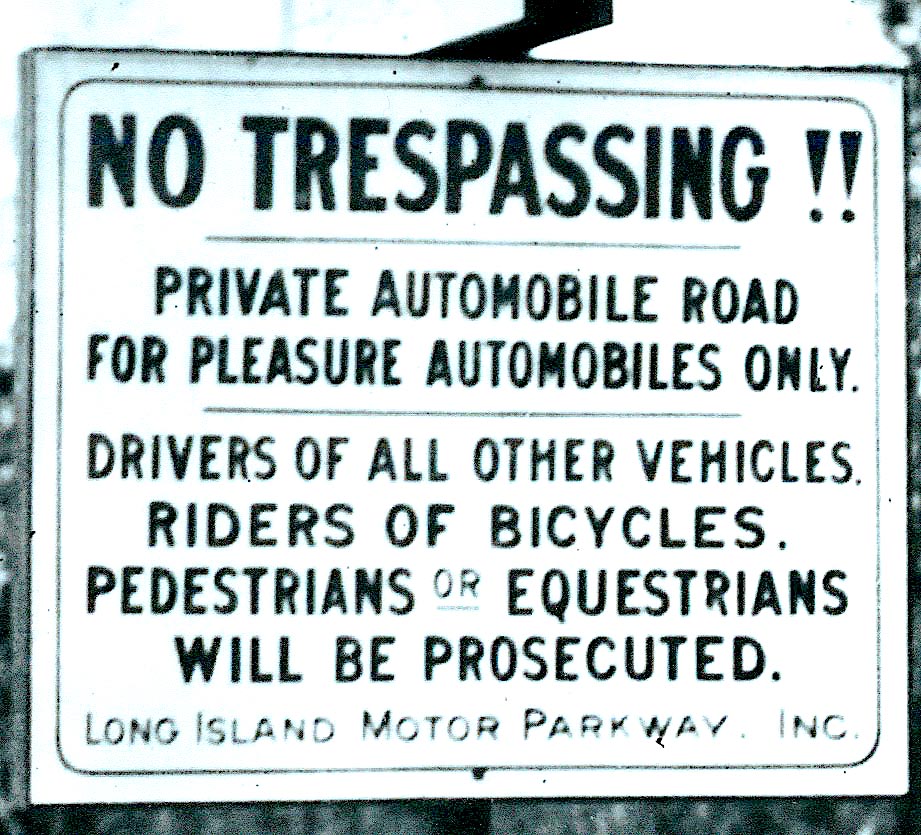
Signs had been posted but observers said most motorists didn't adhere to their warnings.
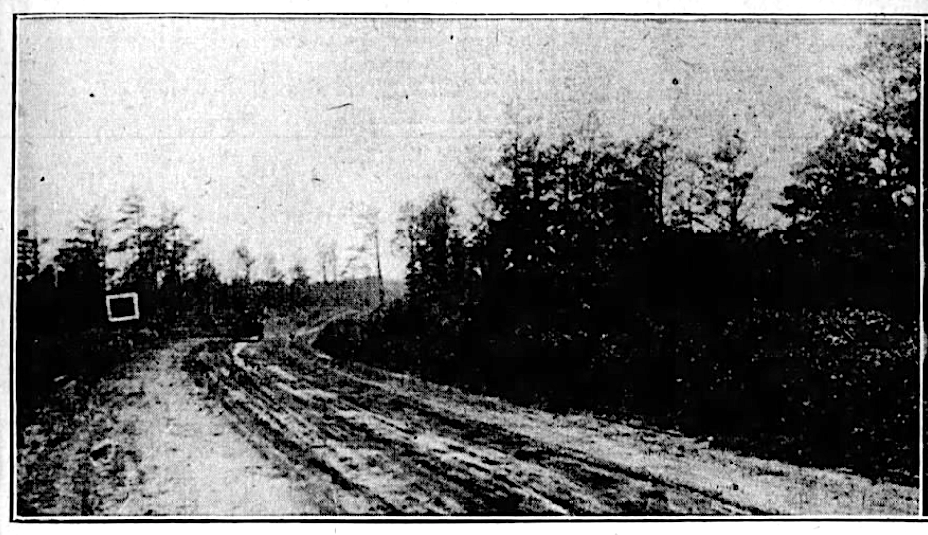
Wheeler Road looking north.
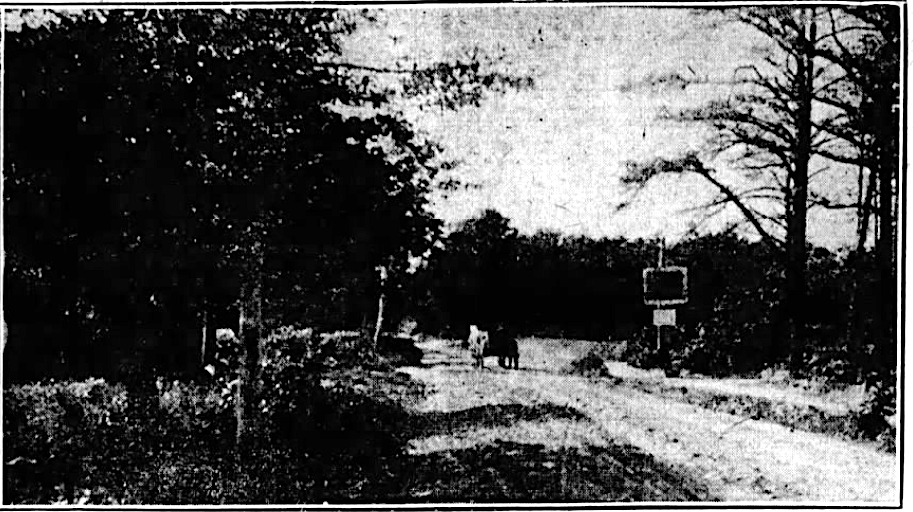
Wheeler Road looking west on the Motor Parkway.
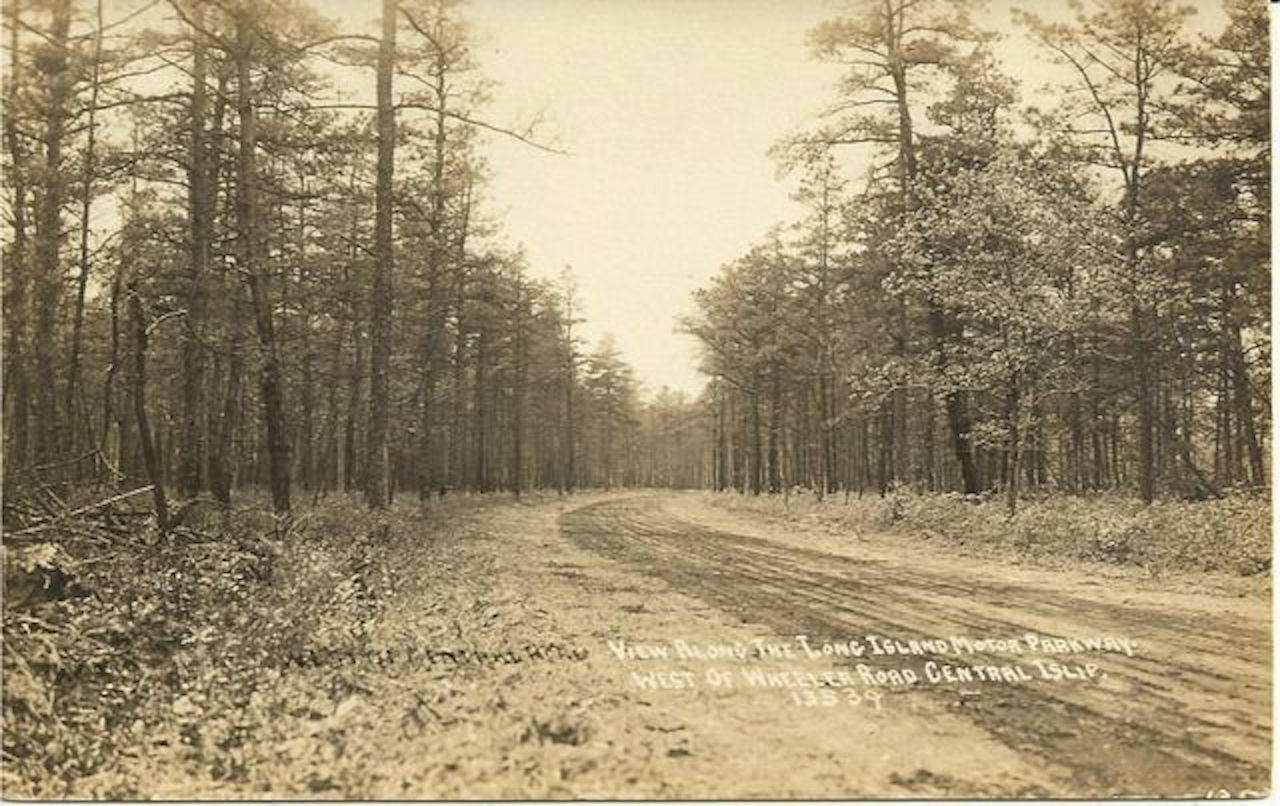
West of Wheeler Road.
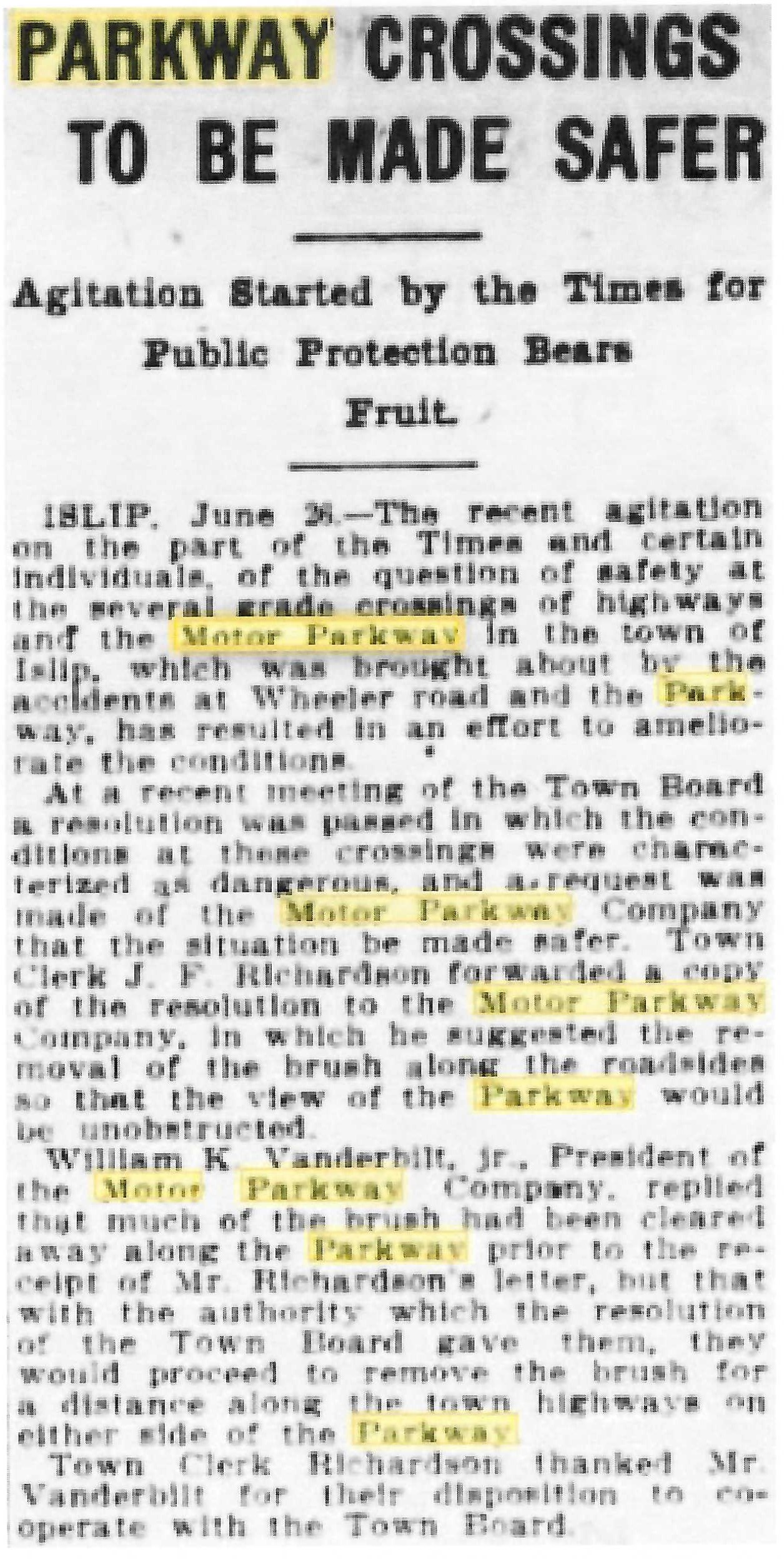
A response from Willie K. (Brooklyn Time Union Jun. 26, 1911)

Number 29 (Wheeler Road) on the list of bridges planned but never built!

In 1918, the town decided to improve the intersection by installing "cinders" for Wheeler Road. (Brooklyn Times Union Mar. 9, 1918)
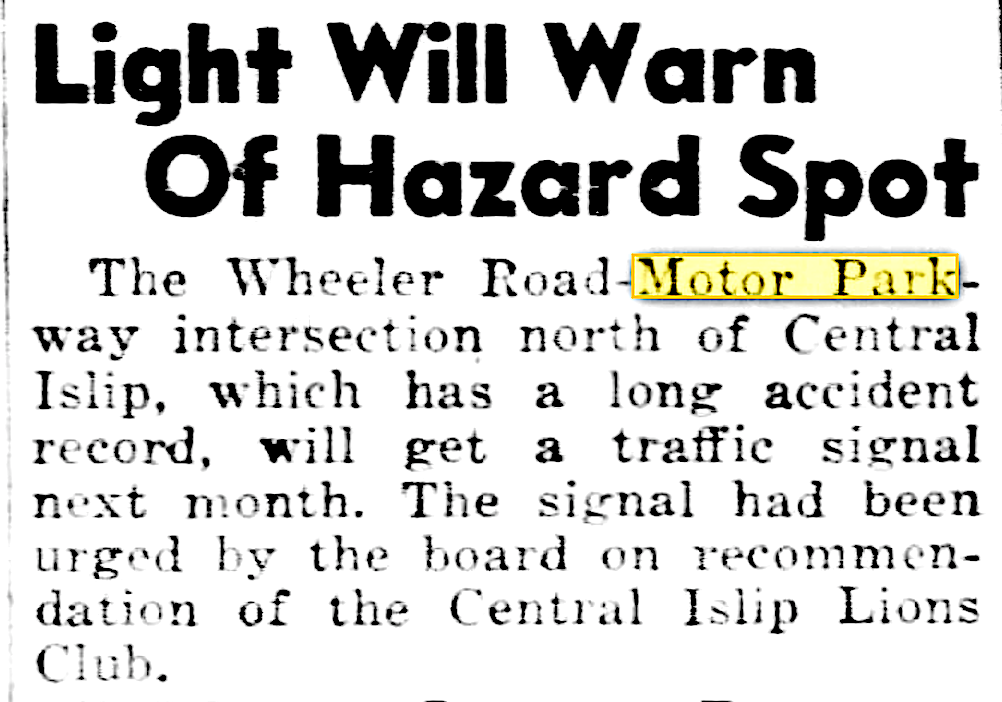
Throughout the decades accidents continued and in December, 1954 a traffic light was finally authorized. (NY Daily News, Dec. 19, 1954)
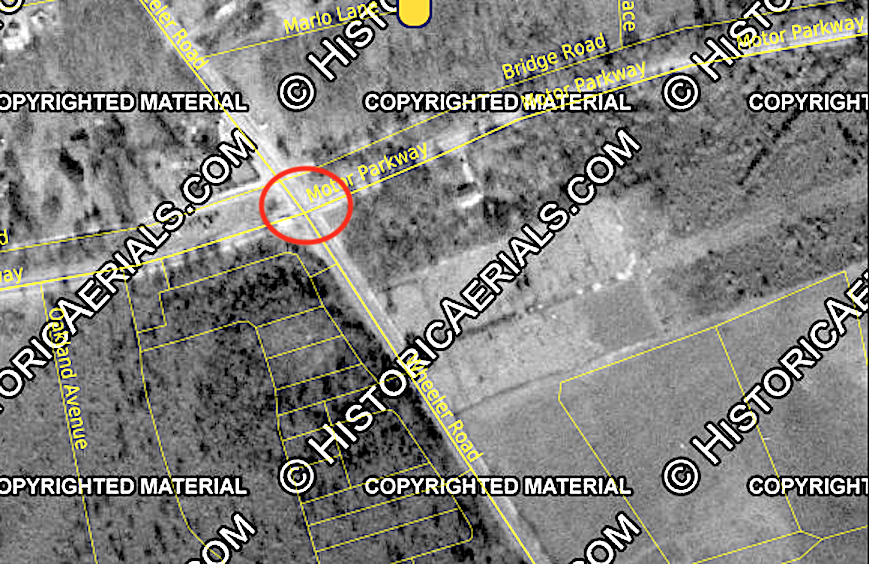
1954 (Historicaerials.com)

2019 (Google Earth)

Comments
I don’t think that cars of that era could go very fast in the mud on Wheeler Road. That may have saved lives too. Driver behavior hasn’t changed in a century unfortunately.
I think the cinders were logs or planking. Residents must of been overjoyed when the roads received actual pavement. There must’ve been some type of stop signs before the traffic signals.
I remembered Sam III has the image below of the LIMP near Wheeler Rd in Central Islip on this page sbiii.com/limphst4.html He would’ve like to share this with us.
Brian, It was fairly common to use cinders and ashes from coal burning furnaces to temporarily improve road conditions, mostly in rural areas, from the teens to the late 1930’s….Regarding stop signs, that came about in 1913. They were first placed in the center of the Parkway ROW on both sides of Commack Rd., Wheeler Rd, and Rosevale Ave. Signs were also placed on the Parkway 300 feet back from these roadways informing Parkway motorists of the stop signs. Over the next several years other public roadways received the same treatment. In 1926 the stop signs came down as the first blinker lights were installed by the Parkway at these three crossings. Powered by gas, they blinked red for the Parkway motorists and green for the motorists on the public highways. At the same time I believe the blinker lights were at placed at two other crossings.